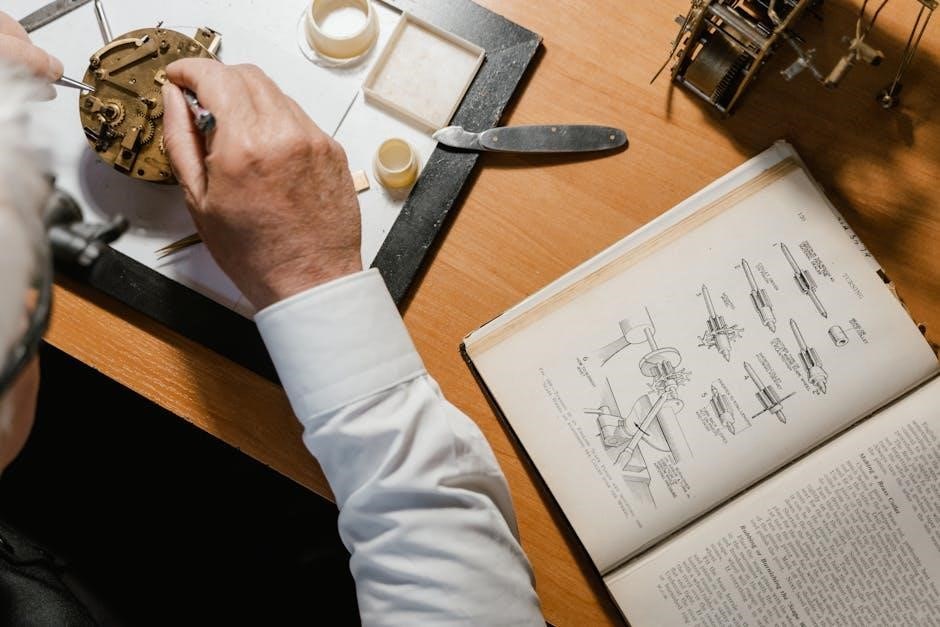Manual transmission shift linkage diagram is a complex system, involving many parts, including shift rails and forks, that work together to provide smooth gear shifting, using a combination of levers and cables to connect․
Overview of the Topic
The manual transmission shift linkage diagram is a crucial component of a vehicle’s transmission system, responsible for facilitating smooth gear shifting․ This complex system involves a combination of levers, cables, and other parts that work together to provide seamless gear transitions․ The topic of manual transmission shift linkage diagrams is multifaceted, encompassing various aspects such as the design, functionality, and maintenance of the system․ Understanding the intricacies of this system is essential for vehicle manufacturers, mechanics, and drivers alike․ The internet provides a wealth of information on this topic, including diagrams, tutorials, and troubleshooting guides․ By exploring these resources, individuals can gain a deeper understanding of the manual transmission shift linkage diagram and its role in ensuring optimal vehicle performance․ Furthermore, knowledge of this system can help drivers identify and address potential issues, ultimately leading to improved driving experiences and reduced maintenance costs․ Overall, the manual transmission shift linkage diagram is a vital aspect of vehicle transmission systems․
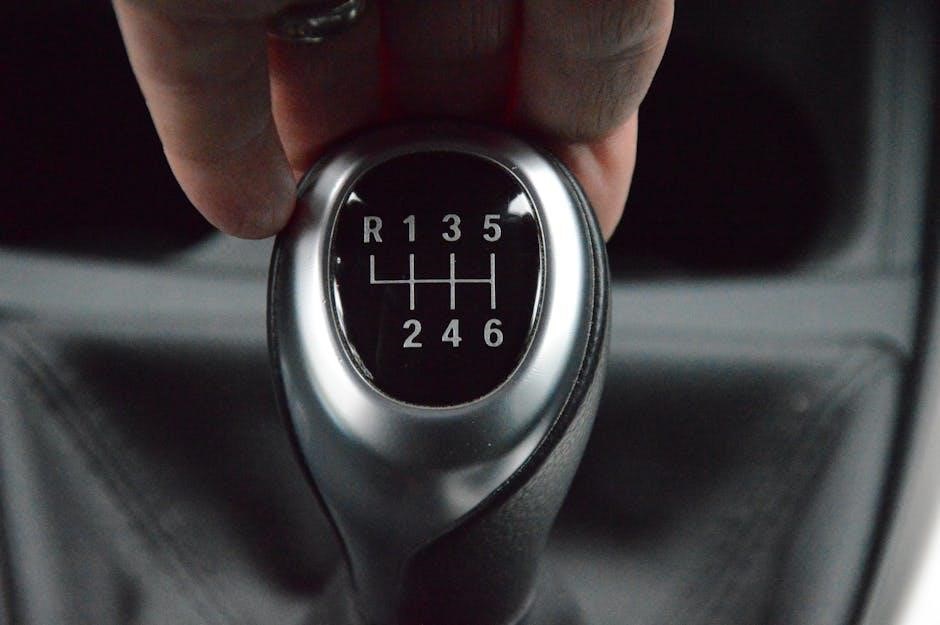
Components of the Shift Linkage
Shift linkage consists of various parts, including shift rails, forks, and levers, connected by cables and rods, working together to facilitate gear shifting, with each part playing a crucial role․
Shift Rails and Forks
Shift rails and forks are critical components of the manual transmission shift linkage diagram, responsible for facilitating the engagement and disengagement of gears․ The shift rails connect the shift lever to the fork, which is attached to a synchronizer․ When the driver moves the shifter to select a gear, the shift rail moves the shift fork, allowing the synchronizer to engage the desired gear․ The shift forks are typically mounted on bearings, allowing for smooth movement and minimizing wear on the components․ The shift rails, on the other hand, are usually made of robust materials to withstand the stresses of gear shifting․ Proper alignment and adjustment of the shift rails and forks are essential to ensure smooth and precise gear shifting․ The design and construction of these components can vary depending on the specific transmission and vehicle application, but their fundamental function remains the same․ The shift rails and forks work in tandem to provide a reliable and efficient gear shifting experience․
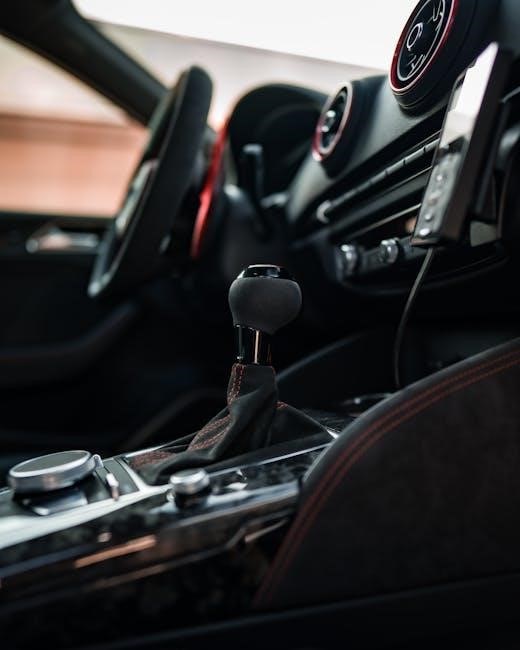
Common Problems with the Shift Linkage
Manual transmission shift linkage problems often arise from worn or damaged components, causing difficulties with gear shifting, using cables and levers to connect․
Cable Stretching
Cable stretching is a common issue in manual transmission shift linkage systems, where the cables that connect the shift lever to the gearbox can become stretched over time, leading to problems with gear shifting․ This can cause the gears to engage unevenly, leading to difficulties with shifting and potentially causing damage to the transmission․ The cables can become stretched due to wear and tear, as well as from driving habits such as riding the clutch or shifting gears too quickly․ Cable stretching can be prevented by regular maintenance, such as adjusting the shift linkage and replacing worn or damaged cables․ It is also important to drive smoothly and avoid riding the clutch, as this can help to reduce the wear and tear on the cables and other components of the shift linkage system․ By taking these steps, drivers can help to prevent cable stretching and keep their manual transmission shift linkage system running smoothly․
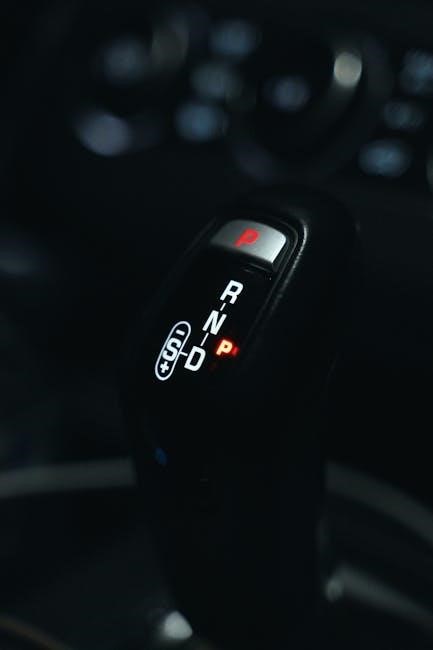
Statistical Simulation of Shift Force
Simulation approaches evaluate shift feeling for manual transmissions using statistical methods and data analysis techniques to optimize performance․
Schematic Diagram of Linkage System
A schematic diagram of the linkage system is a visual representation of the components and their relationships, showing how the shift lever, shift rails, and forks work together to provide smooth gear shifting․ The diagram typically includes symbols and labels to identify each part and its function; By studying the schematic diagram, technicians and engineers can understand the intricacies of the linkage system and diagnose problems more effectively․ The diagram can also be used to design and develop new linkage systems, taking into account factors such as shift force, gear ratio, and transmission type․ Additionally, the schematic diagram can be used to educate students and enthusiasts about the inner workings of manual transmissions, providing a clear and concise overview of the complex system․ Overall, the schematic diagram is an essential tool for anyone working with manual transmissions, providing a detailed and accurate representation of the linkage system․
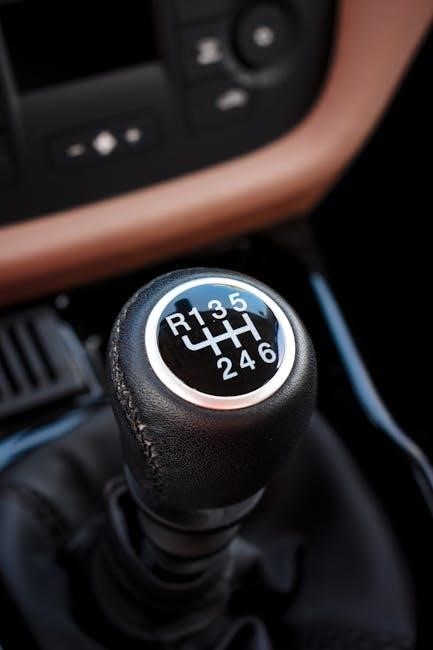
How the Gear Shifting Mechanism Works
Gear shifting mechanism works through a system of levers and cables, connecting the shift lever to the transmission, allowing drivers to manually shift gears, using a clutch pedal to disconnect the engine․
Movement of the Lever
The movement of the lever is a critical component of the manual transmission shift linkage diagram, as it directly affects the gear shifting mechanism․ When the driver moves the shift lever, it activates a series of events that ultimately result in the engagement or disengagement of a particular gear․ The lever’s movement is typically guided by a system of linkages and cables that connect it to the transmission․ As the lever is moved, it pushes or pulls on these linkages, which in turn move the shift forks and synchronizers to select the desired gear․ The movement of the lever must be precise and smooth to ensure proper gear shifting and to prevent damage to the transmission․ The design of the lever and its associated linkages is therefore crucial to the overall performance of the manual transmission․ The movement of the lever is also influenced by the driver’s input, making it an essential part of the driving experience․
